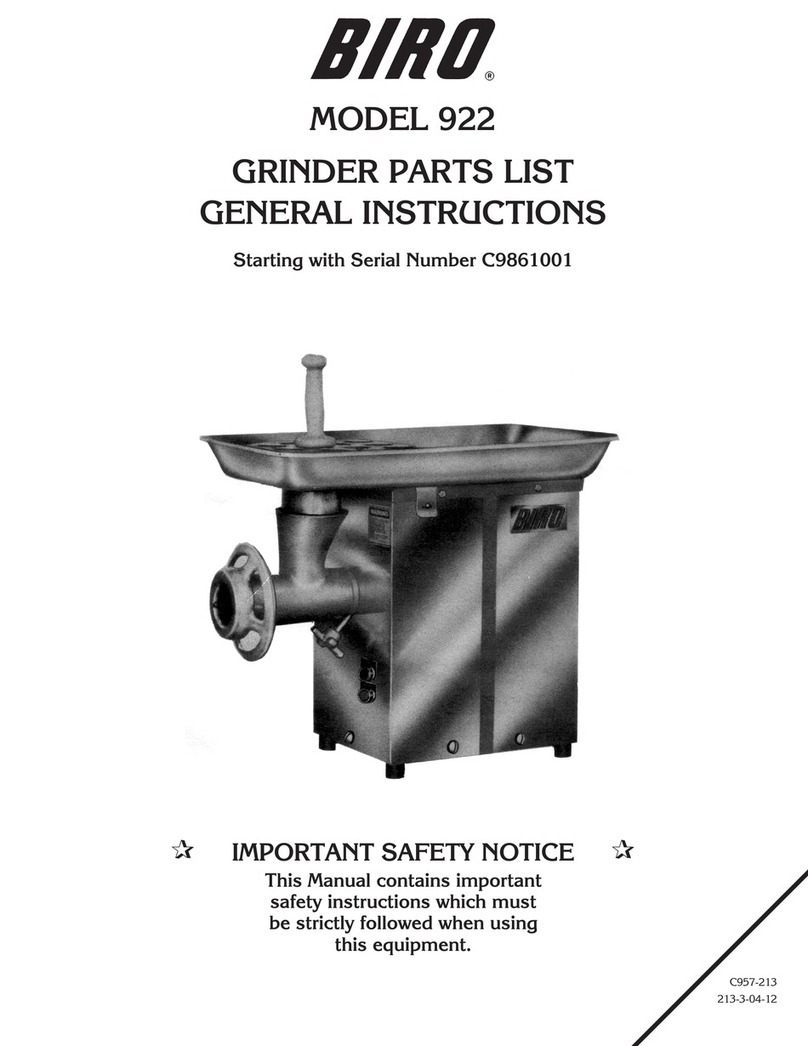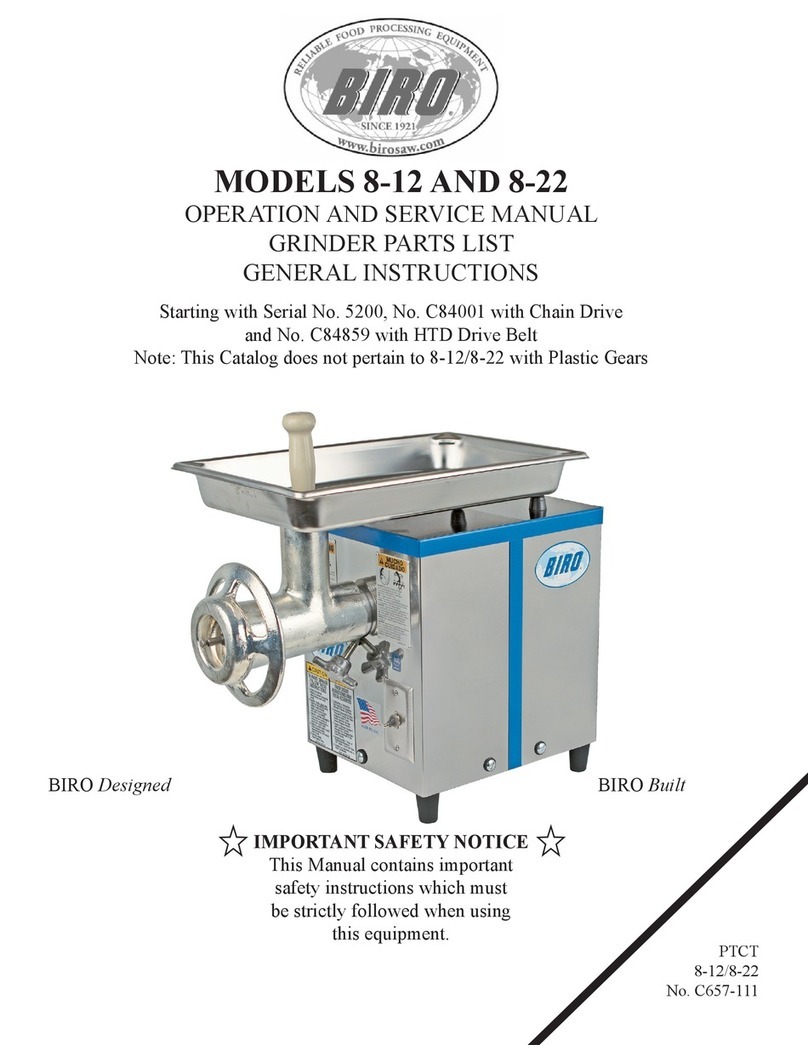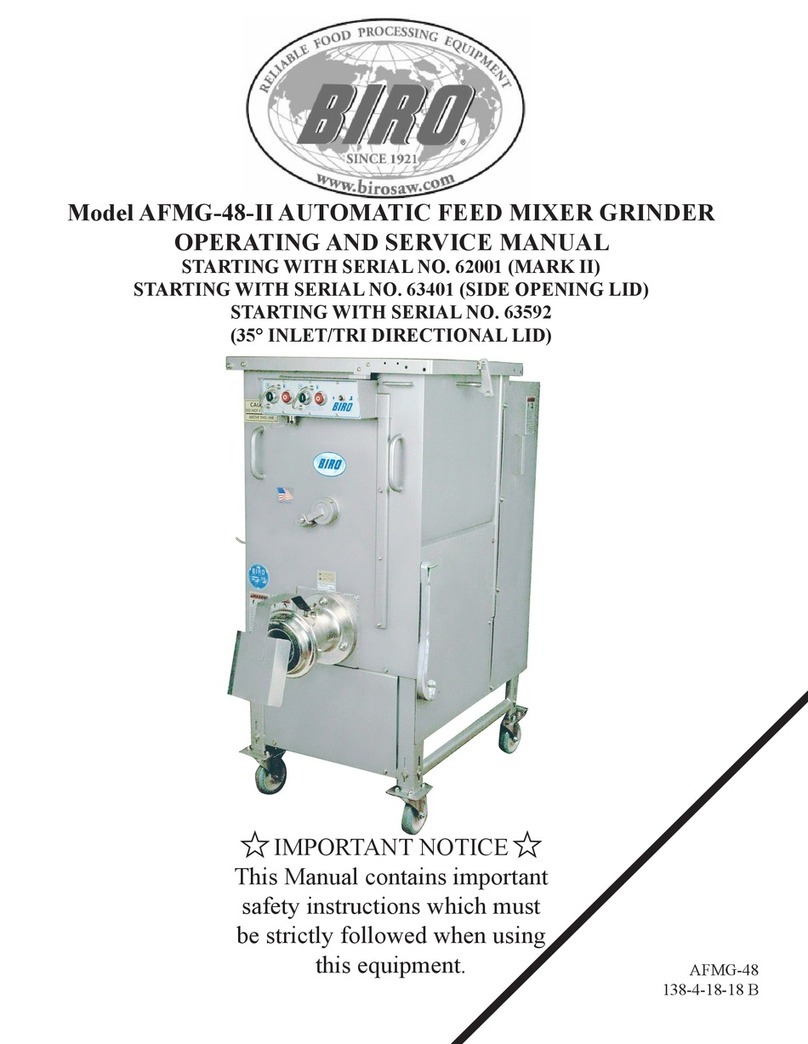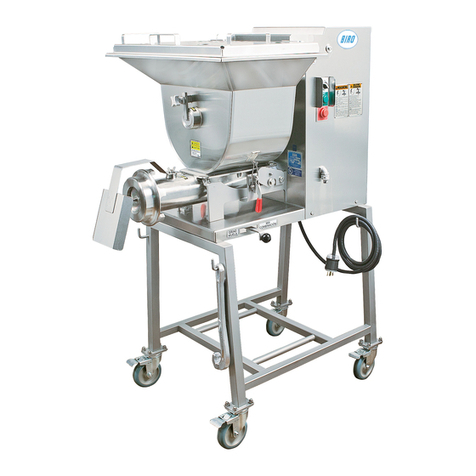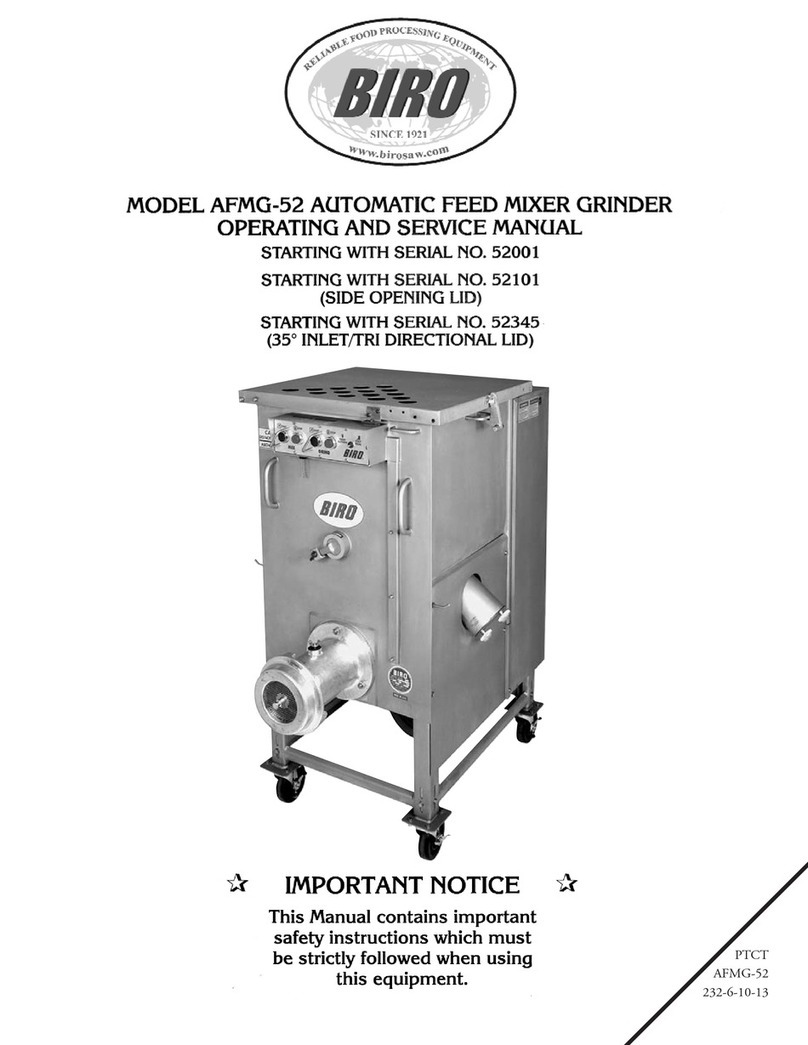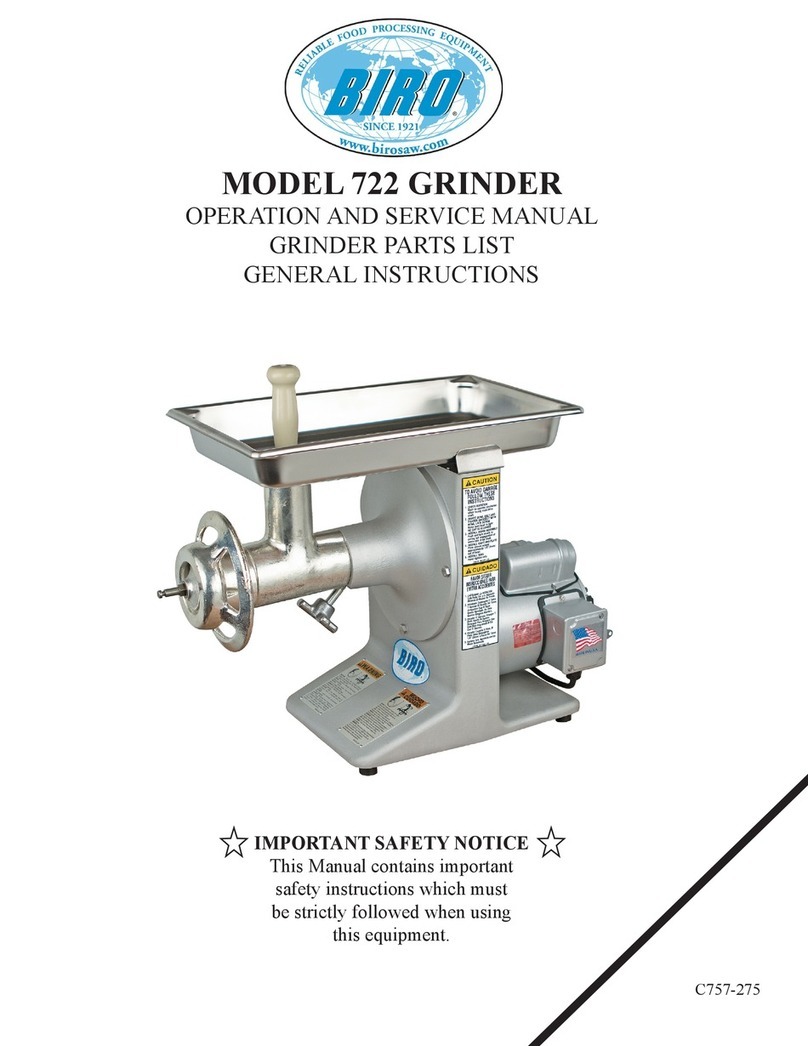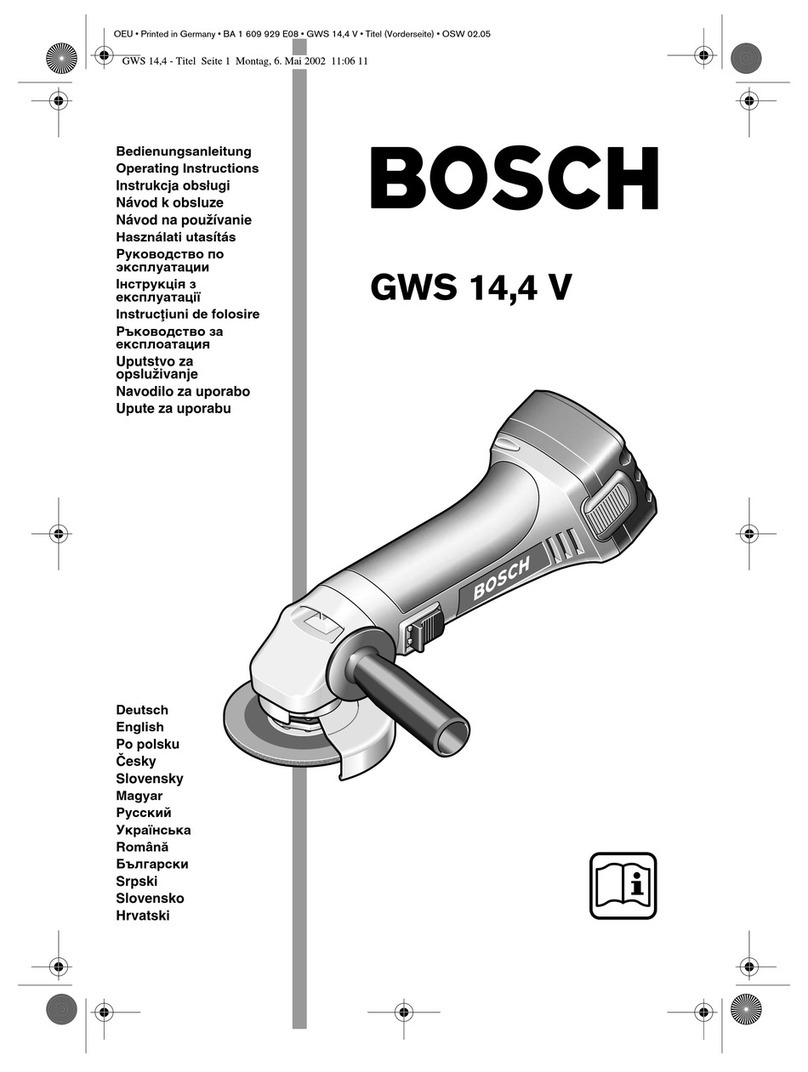
B. LUBRICATION (cont.)
Recommended types of chain lubricant are those with Molybdenum Disulphide or Graphite added. Also
bonded lubricants such as Dow Corning Molykote 321R or equivalent are excellent for open chains. e
lubricant should be of a viscosity whereby it will “flow” somewhat and penetrate the internal working surfaces.
ick stiff greases are of little value because they cannot work into moving parts of the chain.
a. Unplug mixer/grinder from power source and perform lockout/tagout procedures.
b. Remove rear drive or access cover.
c. Spray or brush lubricant on inside of chain, slowly and carefully turning the large sprocket by hand.
d. Reinstall rear drive cover.
3. BEARING HOUSING: e main bearings are housed in an enclosed and sealed journal box. Re-lubricate
semi-annually with a good grade of bearing grease. Do not over-grease.
4. MIXER TRANSMISSION: Oil in the mixer transmission should be changed after the first four (4) weeks of
operation. is is to remove the “run-in” oil and also any small metal shavings that may have been generated
during the mating of the gears. After the initial oil change, subsequent changes should be performed every
six (6) months. After draining the oil, refill the unit to the “level” plug on the back side of the transmission
with pertoleum-based #8 gear oil.
5. PROCEDURE FOR REPLACING OIL IN WINSMITH MIXER TRANSMISSION:
a. Unplug mixer grinder from power source and perform lockout/tagout procedures.
b. Remove rear drive or access cover.
c. Remove breather plug from top of transmission and oil level plug from back side of transmission.
d. With a container in place to catch old oil, remove the drain plug from the bottom of the transmission.
e. When all oil has drained, clean the drain plug and replace in the transmission.
f. Refill transmission with pertoleum-based #8 gear oil or equivalent until oil appears at bottom of oil level
hole. For applications that involve severe ambient temperature extremes, Winsmith recommends the use of
Synthetic Lubricant such as: Texaco Vanguard 460, Mobile SHC 630, and Mobile SHC 634. ese gear
reducers contain 0.9 QT. of lubricant
g. Replace breather and oil level plugs.
h. Reinstall rear drive or access cover.
C. MIXER DRIVE CHAIN TENSION
1. Unplug mixer/grinder from power source and perform lockout/tagout procedures.
2. Remove rear drive cover or access cover.
3. Loosen the four bolts holding the ¾HP motor and transmission to its mounting plate.
4. Slide transmission to the right.
5. When approximately 1/8” total chain flex has been attained, retighten transmission bolts.
6. Reinstall rear drive cover or access cover.
D. MAIN DRIVE CHAIN TENSION
1. Unplug mixer/grinder from power source and perform lockout/tagout procedure.
2. Remove rear drive cover or access cover.
3. Loosen the four bolts that hold the motor to the frame of the machine.
4. Loosen the lock nuts on the motor adjusting stud.
5 . To Loosen Chain Tension. turn motor adjusting studs counterclockwise. Grasp motor and pull toward
adjusting stud. Be sure to turn both adjusting studs the same amount and evenly. Total chain flex should be
1/8“ to 3/8“. Be sure to keep motor shaft parallel with auger drive shaft.
To Tighten Chain Tension. Turn motor adjusting studs clockwise. Be sure to turn both adjusting studs the
same amount and evenly. Total chain flex should be 1/8“ to 3/8“. Do not overtighten chain as this will put
excessive and damaging pressure on the motor bearings. Be sure to keep motor shaft parallel with auger
drive shaft.
6. Retighten motor mounting bolts.
7. Retighten motor adjusting stud lock nuts.
8. Reinstall the rear drive cover or access cover.
8
